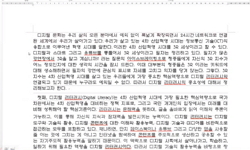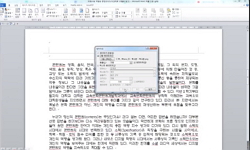In this present study, a) we review how phonological word (‘p-word’) has been defined and used in Korean Linguistics, b) based on which we examine the clear-cut notion of p-word in Korean. We first show that p-word has four major roles in Korean l...
http://chineseinput.net/에서 pinyin(병음)방식으로 중국어를 변환할 수 있습니다.
변환된 중국어를 복사하여 사용하시면 됩니다.
- 中文 을 입력하시려면 zhongwen을 입력하시고 space를누르시면됩니다.
- 北京 을 입력하시려면 beijing을 입력하시고 space를 누르시면 됩니다.
https://www.riss.kr/link?id=A106632101
- 저자
- 발행기관
- 학술지명
- 권호사항
-
발행연도
2020
-
작성언어
-
- 주제어
-
KDC
700
-
등재정보
KCI등재
-
자료형태
학술저널
-
수록면
57-84(28쪽)
- DOI식별코드
- 제공처
- 소장기관
-
0
상세조회 -
0
다운로드
부가정보
다국어 초록 (Multilingual Abstract)
In this present study, a) we review how phonological word (‘p-word’) has been defined and used in Korean Linguistics, b) based on which we examine the clear-cut notion of p-word in Korean. We first show that p-word has four major roles in Korean linguistics: a domain to apply phonological rules or constraints, a criterium to judge the boundary of morphological or syntactic words, a bridge to understanding the concept of word that was first developed based on inflecting languages, and a scaffold to the utterance-level phonology. We then suggest that p-word has been used to refer to three different units, some of which are morphological, not phonological, which led to a vicious circle. More specifically, p-word referred to one of the following three units across studies: a) a lexical item and its following postpositions or case markers, b) a lexical item and all following bound forms, c) a phonological unit marked by a physical pause. Based on the above review, we claim that 1) the notion of p-word should be restricted to phonological units and b-2) both connotation and denotation of p-word should be merely phonological. Sequentially, in order to re-define p-word, we examine the notion of pause and eojeol, the key concepts that have been adopted to define p-word in the literature. Finally, we defined p-word in Korean as ‘a unit marked by a physical pause, consisting of (a) phonological lexeme(s)’ in support of the third connotation of p-word: a phonological unit marked by a physical pause. Finally, two remaining connotations were assigned to simple eojeol and compound eojeol, respectively, in consideration of their morphological character.
동일학술지(권/호) 다른 논문
-
- 한국어문교육연구회
- 오미영(吳美寧) ( Oh Mi-young )
- 2020
- KCI등재
-
- 한국어문교육연구회
- 오민석(吳玟錫) ( Oh Min-seok )
- 2020
- KCI등재
-
「남염부주지(南炎浮洲志)」의 두 세계, 신념(信念)과 의혹(疑惑)
- 한국어문교육연구회
- 이승수(李勝洙) ( Lee Seung-soo )
- 2020
- KCI등재
-
1960년대 동인지(同人誌) <현대시>에 나타난 분열증적 육체(schizo-body)의 환상(幻想) 연구
- 한국어문교육연구회
- 서진영(徐眞暎) ( Seo Jin-young )
- 2020
- KCI등재





 KCI
KCI KISS
KISS







